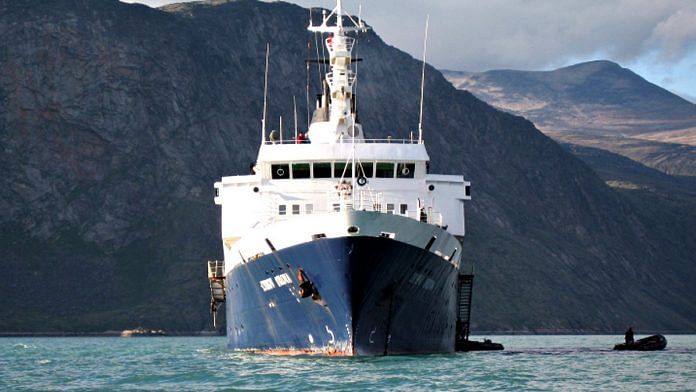I recently wrote a column on the challenges posed by China both on the South China Sea and globally on the deep seabed. But there is another element to the maritime “Great Game” China is playing: the Arctic Ocean. This may seem counterintuitive – last time I looked at a map, China did not have any Arctic waterfront. But this has not stopped Beijing from an aggressive program of building influence in what the Canadians call the High North.
When I was supreme allied commander of NATO, I asked my friend General Walt Natynczyk, then the Canadian military’s chief of staff, whether he was worried about a Russian invasion of the Canadian Arctic. He chuckled and said, “Jim, if they tried to invade, my mission would probably turn out to be search and rescue.” His point – how difficult it is to execute operations up there – was well taken. But China, which until recently has no experience in that harsh environment, is learning quickly and expanding its reach and expertise aggressively.
China petitioned and in 2013 won a seat as an observer on the influential Arctic Council, composed of nations that have territory in the northern latitudes – Canada, Denmark (by virtue of Greenland), Iceland, Norway, Russia and the U.S. – plus Sweden and Finland. China has been a vocal member of the group; when I was with NATO and attended several Arctic Council gatherings (including one for all the chiefs of defense with forces there), I was surprised to see the high level of the Chinese delegations attending.
The Chinese are also building nuclear-powered icebreakers, something the U.S. has not even contemplated. At more than 30,000 tons, the Chinese ships will outpace any other nation’s capability with the exception of Russia (which operates the world’s largest fleet of icebreakers, including several huge nuclear-powered models), and will join a fleet of six conventionally powered ships. The U.S., on the other hand, has only three active Coast Guard icebreakers, two of which are quite small.
Icebreakers are key to two crucial elements of what makes the Arctic so strategically vital. The first is the enormous trove of hydrocarbons that will be uncovered as the ice melts. Some estimates approach 2 trillion cubic feet of natural gas and nearly 100 billion barrels of oil. Icebreakers open the logistics paths for placement of the necessary oil and gas rigs. Additionally, the melting Arctic ice will create shipping routes that could be geopolitically central for China’s One Belt, One Road global development strategy.
But the centerpiece of China’s Arctic ambitions is its increasing military, political and economic alignment with Russia. For several years, the two superpowers have been conducting a military exercises both at sea (including in the Baltic Sea, in the heart of European waters) and Siberia. They see working together as a hedge against the U.S., and their cooperation will create significant challenges for the NATO nations with Arctic territory.
How can the U.S. prepare to face a rising Chinese challenge in the Arctic? First, by working with the NATO allies in improving wide-area surveillance and situational awareness of both Russian and Chinese operations. Second, the Pentagon should build at least a half-dozen icebreakers capable of operating year-round. Third, the U.S. military should exercise more routinely in the region alongside its Canadian partners. And finally, Washington must better integrate government efforts with a focus on the Arctic – the Department of Defense and Department of Homeland Security (where the Coast Guard resides) must work together of course, but also the Department of Energy (hydrocarbon development), the EPA (environmental studies) and the State Department (coordinating with allies, partners and friends).
With all the rising security tensions across the globe, the last thing we need to be worrying about is true military conflict in the polar regions, north and south. But keeping that peace means working with allies to keep an eye on what China and Russia are up to on the Arctic ice.
Also read: Climate change is accelerating, says another UN report. Here’s why






